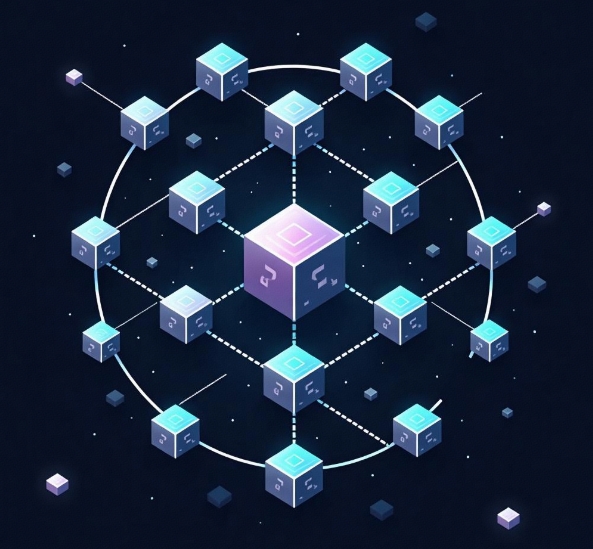How to Test and Ensure Quality Control for Blockchain Applications
- latest articles
- 1.DApp Development & Customization: Merging Diverse Market Needs with User Experience 2.Analysis of the Core Technical System in DApp Project Development 3.How to achieve cross-chain interoperability in Web3 projects? 4.How does the tokenization of points reconstruct the e-commerce ecosystem? 5.How to Set and Track Data Metrics for a Points Mall? 6.What is DApp Development? Core Concepts and Technical Analysis 7.Inventory of commonly used Web3 development tools and usage tips 8.Development of a Distribution System Integrated with Social E-commerce 9.Six Key Steps for Businesses to Build a Points Mall System 10.What is DApp Development? A Comprehensive Guide from Concept to Implementation
- Popular Articles
- 1.Future Trends and Technology Predictions for APP Development in 2025 2.Analysis of the DeFi Ecosystem: How Developers Can Participate in Decentralized Finance Innovation 3.From Zero to One: How PI Mall Revolutionizes the Traditional E-commerce Model 4.DAPP Development | Best Practices for Professional Customization and Rapid Launch 5.Recommended by the Web3 developer community: the most noteworthy forums and resources 6.From Cloud Computing to Computing Power Leasing: Building a Flexible and Scalable Computing Resource Platform 7.How to Develop a Successful Douyin Mini Program: Technical Architecture and Best Practices 8.Shared Bike System APP: The Convenient Choice in the Era of Smart Travel 9.How to Create a Successful Dating App: From Needs Analysis to User Experience Design 10.From Design to Development: The Complete Process of Bringing an APP Idea to Life
Blockchain technology has gained widespread applications in recent years, particularly in fields such as finance, supply chain management, and smart contracts, gradually becoming a transformative technology. Although blockchain offers advantages like decentralization, data immutability, and high security, developing blockchain applications still faces many challenges, especially in testing and quality control. Unlike traditional applications, blockchain applications involve more complex components and interaction methods, requiring specialized testing approaches and rigorous quality control processes to ensure their proper functioning.
I. Characteristics of Blockchain Applications
Before delving into the testing and quality control methods for blockchain applications, it is essential to clearly understand their unique characteristics. Compared to traditional applications, blockchain applications have the following distinct features:
Decentralization: A core feature of blockchain is decentralization, meaning blockchain applications do not rely on a single central server but are maintained collectively by multiple nodes in the network. Therefore, testing blockchain applications must ensure coordination and consistency among all nodes.
Smart Contracts: Smart contracts are self-executing contracts on the blockchain that automatically execute, control, and record relevant legal actions or business transactions. Testing smart contracts is more challenging than traditional applications because they require ensuring code security and logical correctness to prevent vulnerabilities from being maliciously exploited.
Immutability: The immutability of blockchain means that once data is written to the blockchain, it cannot be modified or deleted. This characteristic requires testers to strictly focus on data consistency and integrity during quality control of blockchain applications.
Distributed Ledger: Blockchain is a distributed ledger where all data is replicated and stored across multiple nodes in the network. This requires testers to ensure data consistency in the blockchain, avoiding data loss or errors due to network delays or node failures.
II. Types of Testing for Blockchain Applications
Due to the complexity and uniqueness of blockchain applications, the testing process often needs to cover multiple levels. Below are several common types of testing for blockchain applications:
1. Unit Testing
Unit testing is the foundation of blockchain application testing, primarily validating individual blockchain components to ensure their functions perform as expected. For smart contracts, unit testing is particularly important because errors in smart contracts can lead to financial losses or other serious consequences. Testers need to write specific test cases to verify each function and process of the smart contract.
2. Integration Testing
Integration testing aims to verify whether the interactions between multiple modules or components meet expectations. In blockchain applications, integration testing is especially important because different components of the application typically interact across multiple nodes. Testers need to ensure data consistency between nodes, transaction correctness, and network stability.
3. Performance Testing
Performance testing for blockchain applications focuses on aspects such as transaction throughput, transaction confirmation time, and network latency. Since blockchain applications require synchronization across multiple nodes in a decentralized network, performance testing helps developers identify system bottlenecks and optimize transaction processing speed.
4. Security Testing
Security is one of the most critical testing areas for blockchain applications. Due to the decentralized nature of blockchain technology, any vulnerability can be exploited by malicious attackers, leading to asset loss or system collapse. Security testing should cover smart contract vulnerabilities, network attacks (such as 51% attacks), node security, data leaks, and other aspects.
5. Compatibility Testing
The rapid development of blockchain technology has led to many different types of blockchain platforms and protocols. When developing blockchain applications, developers need to ensure that the application is compatible with different versions of blockchain networks, clients, and smart contracts. Therefore, compatibility testing is crucial for blockchain applications.
III. Quality Control for Blockchain Applications
In the development process of blockchain applications, quality control (QC) plays a crucial role. The quality of blockchain applications not only affects their normal operation but also directly relates to their security, stability, and user experience. Below are some effective quality control strategies:
1. Automated Testing
Automated testing is an important means to improve the efficiency and reliability of blockchain application testing. Automated testing can quickly execute a large number of test cases, reduce human errors, and ensure application stability after each code update. Especially for smart contracts, automated testing can simulate various inputs and ensure the correctness of contract logic.
2. Continuous Integration and Continuous Deployment (CI/CD)
Continuous Integration (CI) and Continuous Deployment (CD) are important practices in modern software development that ensure high code quality and reduce integration risks. For blockchain applications, implementing CI/CD can help development teams quickly identify and fix potential defects while ensuring the security and stability of each code deployment.
3. Bug Bounty Programs
Since blockchain applications involve a large number of financial transactions, the security of smart contracts and protocols is crucial. Bug bounty programs involve development teams offering rewards to external security researchers to encourage them to discover vulnerabilities in the application. This approach helps ensure that blockchain applications achieve a high level of security.
4. Regular Audits and Code Reviews
Regular smart contract audits and code reviews are essential means to ensure the quality of blockchain applications. Through audits by third-party security experts, potential security risks can be identified and promptly addressed. Additionally, code reviews help ensure that team members follow best practices and avoid coding errors or bad habits.
5. User Feedback and Monitoring
Quality control for blockchain applications is not limited to the testing phase but also includes continuous monitoring and user feedback collection after deployment. By gathering user feedback and monitoring system performance, development teams can promptly identify issues and make optimizations.
IV. Tools for Blockchain Application Testing and Quality Control
With the development of blockchain technology, many tools specifically designed for testing and quality control of blockchain applications have emerged in the market. Below are some commonly used tools:
Truffle: Truffle is a development framework for Ethereum blockchain applications with robust testing capabilities. It supports the compilation, deployment, and testing of smart contracts, providing a comprehensive testing environment.
Ganache: Ganache is a tool within the Truffle framework used to create a local blockchain network where developers can test and debug smart contracts.
MythX: MythX is a smart contract security analysis platform specifically designed to identify security vulnerabilities in smart contracts. It uses techniques such as static and dynamic analysis to effectively detect potential issues in smart contracts.
OpenZeppelin: OpenZeppelin provides a series of security-audited smart contract libraries, allowing developers to build applications on these verified contracts to reduce potential security risks.
Jenkins: Jenkins is an open-source automation server widely used in the CI/CD processes of blockchain applications, helping development teams automate testing, building, and deployment.
V. Conclusion
With the continuous development of blockchain technology, testing and quality control for blockchain applications are becoming increasingly important. Since blockchain applications involve complex components such as decentralization and smart contracts, developers and testers need to pay special attention to their security, performance, and consistency. Through effective testing strategies, quality control measures, and the use of professional testing tools, blockchain applications can operate stably while ensuring efficiency and security, meeting user needs.
The future of blockchain technology is full of potential. As the technology matures, quality control and testing for blockchain applications will become more scientific and efficient. Only by continuously improving the quality of blockchain applications can we ensure that this technology can be widely applied and promoted globally.
-

How to achieve cross-chain interoperability in Web3 projects?
With the continuous development of WEB3 technology, Web3 has gradually become an···
-

Inventory of commonly used Web3 development tools and usage tips
With the continuous development of blockchain technology, Web3 has become a hot ···
-

Web3 development trend prediction: analysis of future technology directions and application scenarios
With the gradual development of blockchain technology, the concept of Web3 has m···

 Blockchain
Blockchain












